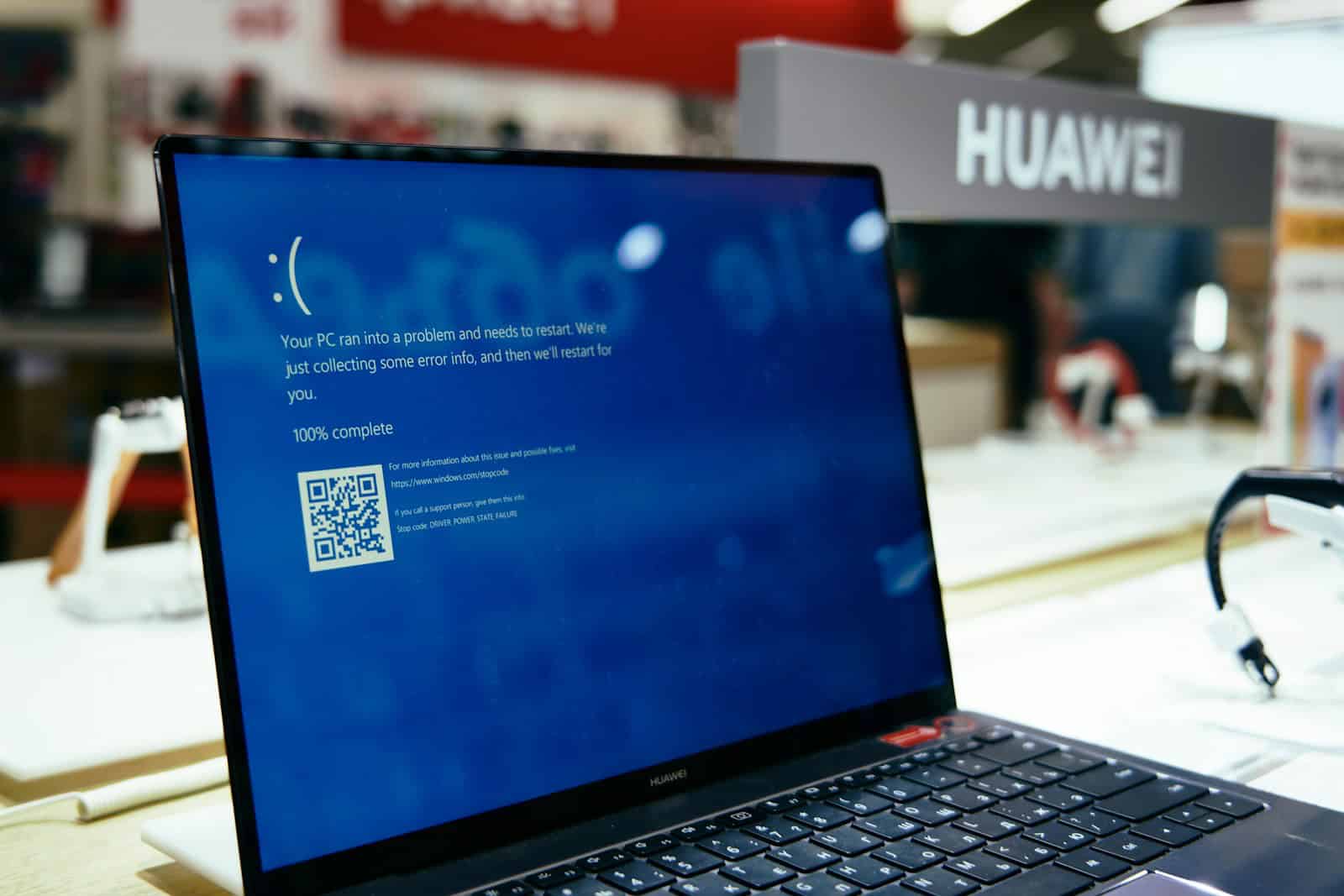Have you ever been working on your computer when suddenly a blue screen appears with the message “Kernel Security Check Failure”? This error, also known as a BSOD (Blue Screen of Death), can stop your work in its tracks. The Kernel Security Check Failure occurs when Windows detects corrupted data in its kernel, often caused by memory corruption, outdated drivers, hardware issues, or corrupt system files.
When this error happens on Windows 10 or 11, you might feel stuck or worried about your data. The good news is that most cases can be fixed without professional help. This error essentially means the system’s security mechanisms caught something wrong and shut down to protect your computer from potential damage.
Understanding what causes this error is the first step to fixing it. The kernel is like your computer’s brain, and when it detects something wrong with how it stores or processes data, it triggers this protective shutdown. Common culprits include incompatible hardware, outdated software, or memory issues that can affect how your system operates.
What Is “Kernel Security Check Failure”?
The “KERNEL_SECURITY_CHECK_FAILURE” is a Blue Screen of Death (BSOD) error in Windows 10 and Windows 11.
It appears when the Windows kernel — the core part of the operating system — detects corruption or inconsistency in critical system data.
When this happens, Windows halts to prevent further damage, showing the stop code:
KERNEL_SECURITY_CHECK_FAILURE (0x00000139)
🧠 Common Causes
According to Microsoft and tech sources like Help Desk Geek and WikiHow, the most frequent causes include:
- Corrupted or outdated drivers
– Especially GPU, network, or storage drivers. - Faulty RAM or memory issues
– Bad memory modules or unstable overclocking. - Damaged system files
– Missing or corrupted Windows files. - Disk errors or bad sectors
– Failing SSD/HDD can trigger kernel checks. - Incompatible software or antivirus programs
– Security tools or virtualization software may conflict with kernel processes. - Windows update issues
– Incomplete or buggy updates can cause instability.
🧩 How to Fix “Kernel Security Check Failure”
Here’s a step-by-step troubleshooting guide:
1. Update Windows and Drivers
- Go to Settings → Windows Update → Check for updates.
- Update all drivers, especially graphics, network, and chipset drivers.
- You can use Device Manager or the manufacturer’s website.
2. Run System File Checker (SFC)
Open Command Prompt (Admin) and run:
sfc /scannow
This scans and repairs corrupted system files.
3. Check Disk for Errors
Run:
chkdsk C: /f
Restart your PC if prompted — Windows will scan and repair disk issues.
4. Test Your RAM
Use the built-in Windows Memory Diagnostic:
- Press Win + R, type
mdsched.exe, and follow the prompts.
If errors appear, you may need to replace or reseat your RAM.
5. Uninstall Problematic Software
Remove any recently installed antivirus, virtualization apps, or system utilities that might interfere with kernel operations.
6. Boot in Safe Mode
If the BSOD prevents normal startup:
- Hold Shift while clicking Restart → Troubleshoot → Advanced options → Startup Settings → Enable Safe Mode.
- From there, uninstall recent updates or drivers.
7. Perform a System Restore
If the issue started recently, use System Restore to revert your system to a stable state.
🔍 Advanced Step (for Experts)
If the error persists, analyze the memory dump file:
- Navigate to
C:\Windows\Minidump - Use WinDbg (Windows Debugger) to open the dump file.
- Look for the faulty driver or process that triggered the crash.
Microsoft’s official documentation explains this process in detail:
➡️ Microsoft Q&A: BSOD KERNEL_SECURITY_CHECK_FAILURE
🧰 Prevention Tips
- Keep Windows and drivers up to date.
- Avoid third-party driver “booster” tools.
- Regularly check your disk and memory health.
- Create restore points before major updates.
✅ Summary
| Problem | Likely Cause | Quick Fix |
|---|---|---|
| BSOD with “Kernel Security Check Failure” | Corrupt driver or memory issue | Update drivers, run SFC/CHKDSK |
| Random crashes after update | Faulty driver or file corruption | Roll back update or restore system |
| Frequent BSODs | Hardware failure (RAM, SSD) | Run diagnostics and replace faulty parts |
In short:
The Kernel Security Check Failure is a safeguard mechanism that stops Windows when it detects internal corruption.
In most cases, updating drivers, scanning for file errors, or testing your RAM resolves it.
Sources:
- Microsoft Q&A – BSOD: KERNEL_SECURITY_CHECK_FAILURE
- Help Desk Geek – How to Fix Kernel Security Check Failure
- WikiHow – Kernel Security Check Failure: Causes & Quick Fixes
- WindowsForum – Causes & Solutions
Key Takeaways
- Kernel Security Check Failure is a protective measure Windows takes when it detects corrupted data in critical system areas.
- Updating drivers, running Windows Update, and checking hardware components are the most effective first steps to resolve this error.
- Using built-in Windows tools like Safe Mode and System File Checker can help diagnose and fix the underlying causes.
Understanding Kernel Security Check Failure
Kernel Security Check Failure is one of the more common Blue Screen of Death (BSOD) errors in Windows. This error occurs when Windows detects corrupted data in critical system memory areas, forcing an immediate shutdown to prevent damage.
Origins of Kernel Errors
The kernel is the core component of an operating system that manages system resources and provides essential services to software applications. When Windows detects memory corruption in areas the kernel uses, it triggers a protective shutdown.
This security mechanism was designed to prevent potentially malicious code from exploiting corrupted memory spaces. The error message displays as “KERNEL_SECURITY_CHECK_FAILURE” with a stop code of 0x00000139.
Modern Windows versions have increased security measures that actively scan for memory corruption. This explains why this particular error became more common starting with Windows 8 and continues through Windows 10 and 11.
Common Causes for Kernel Security Check Failure
Faulty RAM is often the primary culprit behind kernel security check failures. When memory modules deteriorate or have manufacturing defects, they can corrupt data stored in memory.
Incompatible or outdated drivers frequently trigger this error. Drivers act as translators between hardware and the operating system, and when they malfunction, they can write incorrect data to memory locations the kernel uses.
Other common causes include:
- Corrupted system files from improper shutdowns or malware
- Hardware problems such as failing storage devices
- Software conflicts between applications
- Overclocking that creates memory instability
Pool corruption, mentioned in Microsoft’s documentation, refers to memory pools used by the kernel becoming damaged. This often results from faulty drivers writing outside their allocated memory space.
Diagnostic Steps to Identify Kernel Issues
Finding the root cause of a kernel security check failure requires systematic troubleshooting. These diagnostic tools can help pinpoint whether the issue stems from faulty memory, corrupted system files, or malicious software.
Using Windows Memory Diagnostic
Memory problems often trigger kernel security check failures. Windows includes a built-in tool to test RAM integrity.
To run the Windows Memory Diagnostic tool:
- Press Win + R to open Run
- Type mdsched.exe and press Enter
- Choose “Restart now and check for problems”
The computer will restart and run a memory test before Windows loads. The test checks for bad memory sectors and other RAM issues that might corrupt kernel data.
If errors appear, consider cleaning RAM contacts or replacing memory modules. The diagnostic results will display after Windows restarts, but you can also check them in Event Viewer under Windows Logs > System, looking for “MemoryDiagnostics-Results” events.
Utilizing the System File Checker (sfc) and DISM
Corrupted system files can lead to kernel security check failures. Two powerful tools can repair these issues.
To run System File Checker:
- Open Command Prompt as administrator
- Type sfc /scannow and press Enter
- Wait for the scan to complete (it may take 15-20 minutes)
If SFC can’t fix all issues, try DISM:
DISM /Online /Cleanup-Image /RestoreHealth
Run SFC again after DISM completes. These tools repair Windows system files that might be triggering kernel checks to fail. Keep your computer connected to power during these scans to avoid interruptions.
Scanning for Malware
Malware can modify critical system components and trigger kernel security checks.
Start with Windows Security:
- Open Settings > Update & Security > Windows Security
- Select Virus & threat protection
- Click Scan options and run a Full scan
For thorough detection, consider using additional reputable tools like Malwarebytes or Kaspersky Rescue Disk for offline scanning.
Boot-level malware may not be detected by regular scans. If you suspect deep infection, consider booting from a rescue disk to scan your system while Windows isn’t running. Remove any detected threats and restart your computer to see if kernel security checks still fail.
Solving Kernel Security Check Failure
The Kernel Security Check Failure error can be fixed through several troubleshooting methods. These solutions range from simple system updates to more advanced recovery options.
Performing System Restore and Windows Reset
System Restore can fix Kernel Security Check Failure by reverting the computer to a previous working state. To perform a System Restore, users should boot into Safe Mode by pressing F8 during startup, then navigate to “Recovery” in the Control Panel.
If System Restore doesn’t work, a Windows Reset might be necessary. Users can access this option by going to Settings > Update & Security > Recovery > Reset this PC. There are two reset options:
- Keep my files: Removes apps and settings but keeps personal files
- Remove everything: Completely resets the system to factory defaults
For severe cases, booting into Safe Mode can help diagnose the problem. Safe Mode starts Windows with minimal drivers and services, making it easier to identify problematic software.
Updating Windows and Drivers
Outdated or faulty drivers are common causes of the Kernel Security Check Failure error. Updating Windows is the first step in resolving this issue.
To update Windows:
- Go to Settings > Update & Security > Windows Update
- Click “Check for updates”
- Install all available updates
For driver updates, Device Manager is the primary tool:
- Right-click the Start menu and select “Device Manager”
- Look for devices with yellow exclamation marks
- Right-click on problematic devices and select “Update driver”
Graphics card, network adapter, and storage controller drivers often cause this BSOD error. Manufacturer websites usually offer the most current and stable driver versions.
Checking Disk for Errors
Corrupted files or disk errors frequently trigger Kernel Security Check Failure. Running disk diagnostic tools can identify and repair these problems.
To run Check Disk:
- Open Command Prompt as administrator
- Type
chkdsk C: /f /rand press Enter - Schedule the scan for the next restart if prompted
The System File Checker tool can fix corrupted Windows files:
- Open Command Prompt as administrator
- Type
sfc /scannowand press Enter - Wait for the process to complete
For deeper system corruption, the DISM tool helps:
- Run
DISM /Online /Cleanup-Image /RestoreHealthin the Command Prompt
These scans may take time to complete but can solve persistent Kernel Security Check Failure errors by repairing damaged system files.
Advanced Assistance for Kernel Security Failures
When basic solutions fail to resolve kernel security check failures, more specialized approaches may be necessary. These often involve seeking professional help and detailed hardware testing.
Contacting Tech Support
If DIY solutions don’t fix the kernel security check failure, it’s time to contact tech support. Many computer manufacturers offer free support during warranty periods.
Before calling, gather important details about your system:
- Your exact computer model
- Windows version and update status
- When the problem started
- What you were doing when crashes occurred
- Any error codes displayed
Microsoft’s support team can be reached through their official website. For branded computers, contact the manufacturer’s support line directly. Tech support may use remote access tools to diagnose the problem.
Keep a record of all troubleshooting steps you’ve already tried to avoid repeating ineffective solutions.
Hardware Component Verification
Hardware issues often trigger kernel security check failures. Testing each component systematically can identify the culprit.
RAM Testing:
Run Windows Memory Diagnostic or download Memtest86+ to check RAM integrity. Let tests run for at least one complete cycle.
Storage Device Verification:
- For HDDs: Use CHKDSK commands or manufacturer diagnostic tools
- For SSDs: Check drive health with CrystalDiskInfo or manufacturer software
Other Components to Test:
- Graphics card (remove and use onboard graphics if possible)
- Power supply (insufficient power can cause system instability)
- CPU (check temperatures under load)
Hardware testing may require multiple system restarts. Document results from each test to identify patterns in failures.
Frequently Asked Questions
Kernel Security Check Failure errors create frustrating blue screen experiences for Windows users. These common questions address troubleshooting steps, causes, and prevention methods for this specific error.
What steps can I take to troubleshoot a ‘Kernel Security Check Failure’ on Windows 10?
When troubleshooting a Kernel Security Check Failure on Windows 10, start by updating your device drivers. Outdated or corrupted drivers often cause this error.
Run Windows Memory Diagnostic to check for RAM issues. Memory corruption is a common cause of kernel security check failures.
Install the latest Windows Updates to ensure your system has all security patches and fixes. Microsoft regularly releases updates to address known kernel issues.
Check for disk errors by running the CHKDSK utility. Corrupted system files can trigger kernel security failures during normal operation.
How can I resolve a ‘Kernel Security Check Failure’ error during Windows 11 installation?
Verify your computer meets Windows 11 system requirements. Insufficient hardware specifications can cause kernel security check failures during installation.
Update your BIOS/UEFI to the latest version before attempting installation. Outdated firmware can create compatibility issues with Windows 11.
Disconnect unnecessary peripheral devices during installation. Sometimes USB devices or external hardware can interfere with the installation process.
Try creating a fresh installation media using the Media Creation Tool. Corrupted installation files might trigger kernel security failures.
What causes a ‘Kernel Security Check Failure’ when launching games or using Easy Anti Cheat?
Outdated graphics drivers are a primary cause of kernel failures during gaming. Game engines place heavy demands on GPU drivers that may expose kernel vulnerabilities.
Memory overclocking can lead to instability when gaming. Return RAM to default speeds if you experience kernel security check failures during gameplay.
Antivirus or security software might conflict with anti-cheat programs. Try temporarily disabling third-party security software when launching games with anti-cheat protection.
Corrupted game files can trigger kernel errors. Use the game platform’s verification tool to check for and repair damaged files.
Is the ‘Kernel Security Check Failure’ a critical system error, and what are its implications?
Yes, Kernel Security Check Failure is a critical system error that indicates corruption of core system data structures. The operating system intentionally crashes to prevent further damage.
This error points to memory corruption issues that could lead to data loss or security vulnerabilities if allowed to continue. The blue screen is a protective measure.
Frequent occurrences might indicate hardware problems, particularly with RAM, storage devices, or power supply units. Persistent errors require thorough hardware diagnostics.
How do I fix ‘Kernel Security Check Failure’ issues after updating drivers?
Roll back to previous driver versions if the error began after a specific driver update. Windows Device Manager allows you to revert to previously installed drivers.
Use Driver Verifier to identify problematic drivers. This built-in Windows tool can monitor drivers and help pinpoint which one is causing kernel issues.
Reinstall chipset drivers from your motherboard manufacturer’s website. System chipset drivers are fundamental to system stability.
Check for BIOS updates that might resolve compatibility issues with newer drivers. Motherboard manufacturers often release updates to improve system stability.
What are the best practices to prevent the ‘Kernel Security Check Failure’ error in the future?
Keep all drivers and Windows updated regularly. Automatic updates ensure your system has the latest security patches and bug fixes.
Avoid overclocking hardware components beyond stable limits. Excessive overclocking creates system instability that can manifest as kernel failures.
Run periodic memory tests to catch RAM issues before they cause system failures. Windows Memory Diagnostic or Memtest86 can identify problematic memory modules.
Install quality antivirus software and perform regular system scans. Malware can corrupt kernel data structures and trigger security check failures.







